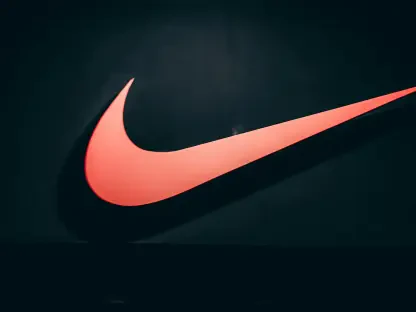Today, we’re thrilled to sit down with Priya Jaiswal, a renowned expert in Banking, Business, and Finance, whose deep knowledge of market analysis and international business trends offers a unique perspective on the tech industry’s biggest players. In this interview, we dive into Apple’s historic achievement of reaching a $4 trillion market value, exploring the driving forces behind this milestone, the impact of their latest iPhone models, the challenges they’ve faced, and how they’re positioning themselves in a competitive and rapidly evolving landscape.
What do you think were the key drivers behind Apple hitting a $4 trillion market value for the first time?
Well, Apple reaching this incredible milestone is really a testament to the success of their latest iPhone launches. The robust demand for these new models has been a game-changer, pulling in customers globally and calming earlier worries about Apple lagging in areas like AI. Beyond that, their stock has seen a nice boost—up about 13% since the September launch—which reflects strong investor confidence in their ability to deliver. It’s not just about the product; it’s about how Apple continues to solidify its brand as a must-have in people’s lives.
How have the latest iPhone models, like the iPhone 17 and iPhone Air, contributed to this surge in demand?
The response to the iPhone 17 lineup and the iPhone Air has been phenomenal. Customers from major cities worldwide have been drawn back to the brand within weeks of the launch. Early data suggests the iPhone 17 is outperforming its predecessor by a significant margin in critical markets like the U.S. and China. The iPhone Air, with its sleek, slim design, has particularly caught people’s attention—it’s a fresh take that seems to resonate with buyers looking for something stylish yet functional.
Apple faced some hurdles earlier this year. Can you walk us through what they were up against before this turnaround?
Absolutely, Apple had a rough start to 2024. One of the biggest challenges was fierce competition in China, where local players have been stepping up their game, eating into Apple’s market share. On top of that, high U.S. tariffs on manufacturing hubs like China and India added pressure on their costs. These tariffs forced Apple to rethink aspects of their supply chain strategy while absorbing some of those extra expenses, which wasn’t easy. It made the success of the new launches even more critical.
How central is the iPhone to Apple’s overall business strategy and success?
The iPhone remains the backbone of Apple’s business. It still accounts for over half of their revenue and profit, which is massive. But it’s more than just sales numbers—it’s about ecosystem growth. Every iPhone sold is a gateway to other Apple products and services like the Apple Watch, iPads, or subscriptions like Apple Music and iCloud. Getting more phones into people’s hands essentially locks them into this interconnected world Apple has built, driving long-term loyalty and revenue.
Let’s talk about Apple’s stock performance. What’s been happening there this year leading up to this milestone?
Apple’s stock journey in 2024 has been a bit of a rollercoaster. Early in the year, it struggled due to concerns over that tough competition in China I mentioned, plus uncertainties around tariffs and slower progress in AI. But since the new iPhone launches on September 9, the stock has surged about 13%, flipping the narrative and putting it in positive territory for the year. This rally shows that investors are regaining trust in Apple’s ability to innovate and maintain its edge, even if it’s not the fastest mover in every tech trend.
How does Apple’s performance stack up against other tech giants who’ve also crossed the $4 trillion mark?
Apple is in elite company as the third tech giant to hit $4 trillion, following others in the space. While Apple’s achievement is impressive, its stock has only gained about 7% this year, which lags behind the broader tech-heavy market’s growth of over 20%. Compared to peers, Apple’s valuation is also trading at a higher multiple—33 times forward earnings versus the market average. This suggests investors are betting big on Apple’s future, but it also means there’s pressure to keep delivering, especially as competitors continue to push boundaries in areas like AI.
There’s been some concern about Apple’s slower approach to AI. How do you see this impacting their position in the industry?
AI is definitely a sticking point for Apple right now. Their cautious rollout of features like Apple Intelligence and delays in upgrades to tools like Siri have raised eyebrows. There’s a perception that they’re not moving fast enough in what could be the biggest growth driver for tech in the coming years. If Apple can’t clearly articulate and execute an AI strategy that excites both consumers and investors, it risks losing ground to rivals who are more aggressive in this space. They’ve explored partnerships to bolster their capabilities, but the jury’s still out on how effective that will be.
What is your forecast for Apple’s trajectory over the next few quarters, especially with these new developments?
I’m cautiously optimistic about Apple’s near-term future. The strong demand for their latest iPhones should carry them through the next couple of quarters with solid results, and their upcoming earnings report could exceed expectations if this momentum holds. However, the AI question looms large—if they can crack that code and integrate it in a way that feels seamless and innovative, we could see another significant leap in their growth. On the flip side, ongoing challenges like competition in key markets and geopolitical tensions affecting manufacturing could pose risks. It’s going to be a balancing act, but Apple has a track record of navigating tough waters.









